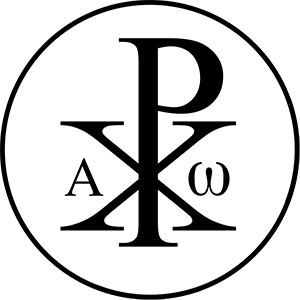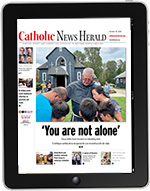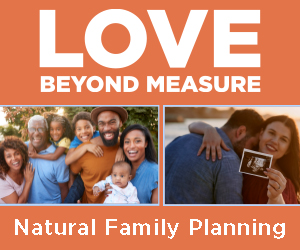Credo: A 12-part series on the creed
Editor's note: This article is the tenth of 12 in a new series on the Creed by Deacon Matthew Newsome. Explore the series
 Belief in an afterlife is not unique to Christianity. Almost all ancient pagan religions expressed belief that the human soul (that spiritual part of ourselves) continues to exist after the death of the body. Most held that our experience of the afterlife could either be pleasant or painful depending upon whether we lived a just life, had adequately appeased the gods, or other factors. And for most religions, that’s about as far as it went. The best one could hope for was to be a happy ghost in the fields of Elysium, to use the Greek name for paradise.
Belief in an afterlife is not unique to Christianity. Almost all ancient pagan religions expressed belief that the human soul (that spiritual part of ourselves) continues to exist after the death of the body. Most held that our experience of the afterlife could either be pleasant or painful depending upon whether we lived a just life, had adequately appeased the gods, or other factors. And for most religions, that’s about as far as it went. The best one could hope for was to be a happy ghost in the fields of Elysium, to use the Greek name for paradise.
Some believed in reincarnation, according to which theory the deceased may be reborn into this world in a different body, not their own – and not necessarily even human! But among the tribes of Israel, as part of God’s revelation, there began to emerge a sense that human beings were destined for something more: not for an endless cycle of different lives, nor an eternal half-life as ghosts, but eternal life as fully human beings with the body God had given us. This was something new and radical!
It had been revealed in Genesis that God’s original plan for mankind was to live forever, and that death had entered human experience only after the Fall. The Book of Wisdom confirms that “God did not make death, nor does He rejoice in the destruction of the living. For He fashioned all things that they might have being” (Wis 1:13-14a). The prophet Daniel foretold that the dead would one day rise, some to everlasting life, others to everlasting disgrace (see Dn 12:2). That this everlasting life would include a restoration to our physical bodies is made evident when God tells the prophet Ezekiel in a vision to speak these words over a field of dry bones: “I will put sinews on you, make flesh grow over you, cover you with skin, and put breath into you so you may come to life” (Ez 37:6). “You shall know that I am the Lord, when I open your graves and make you come up out of them, my people” (Ez 37:13)!
Belief in resurrection is what gave courage to the martyrs we read about in 2 Maccabees. Seven brothers are arrested along with their mother and forced to eat pork in violation of Mosaic law. Their refusal leads to torture and execution. As he is about to have his hands severed, one of the brothers says, “It was from Heaven that I received these … from Him I hope to receive them again” (2 Macc 7:11). Before he is killed, he tells his executioner, “It is my choice to die at the hands of mortals with the hope that God will restore me to life; but for you, there will be no resurrection to life” (2 Macc 7:14).
Faith in resurrection was not universal among the Jewish people at the time of Christ. The Sadducees’ denial of the resurrection lies behind their interrogation of Jesus recorded in Mark 12 and Matthew 22. Among those who did believe in resurrection was the family of Mary, Martha and Lazarus at Bethany. After Lazarus dies, Jesus comforts Martha by saying her brother would rise again. Martha replies, “I know he will rise, in the resurrection on the last day” (Jn 11:24). It is then Jesus reveals to her, “I am the resurrection and the life; whoever believes in me, even if he dies, will live” (Jn 11:25), and calls Lazarus forth from the tomb.
Jesus affirms the resurrection of the dead not only by His words and miracles, but in His very person. After suffering death Himself, Christ rose from the tomb. Unlike Lazarus and others Jesus raised from the dead, however, this was not a restoration back to this life, but a resurrection to a new glorified life. St. Paul calls Jesus “the first fruits” of the final resurrection (1 Cor 15:20). Our hope is that if we die with Christ – that is, as members of His mystical Body – we will also live with Him (see 1 Tim 2:11, Rom 6:8). “We know that Christ, raised from the dead, dies no more; death no longer has power over him” (Rom 6:9). And neither will death have power over us.
Quoting the fourth Lateran Council, the Catechism teaches that Christ “will change our lowly body to be like His glorious body” (CCC 999) and that this will definitively happen “at the last day, at the end of the world” (CCC 1001), when all of the dead will rise, “those who have done good deeds, to the resurrection of life, but those who have done wicked deeds, to the resurrection of condemnation” (Jn 5:29).
This fundamentally changes how we relate to our bodies. Far from being mere shells we inhabit only for a time, to be discarded upon death, as the pagans teach, our bodies are integral to our identities both here and in the hereafter. This informs how we treat our bodies in this life, as reflected in the moral teachings of the Church, as well as how we treat our bodies after death, as reflected in our funeral rites.
Those who rise to new life in the resurrection will not only receive glorified bodies but will inhabit a new and glorified earth. But before this can happen, the old creation must pass away. Just as our bodies must experience death before rising again, so, too, the universe itself. What the Church teaches this heavenly existence will be like is the subject of the final installment of our series on the Creed. In the meantime, the Catechism reminds us that “in a certain way, we have already risen with Christ. For, by virtue of the Holy Spirit, Christian life is already now on earth a participation in the death and Resurrection of Christ” (CCC 1002).
Deacon Matthew Newsome is the Catholic campus minister at Western Carolina University and the author of “The Devout Life: A Modern Guide to Practical Holiness with St. Francis de Sales,” available from Sophia Institute Press.




